Now in its 150th year, WPI continues to graduate accomplished scientists and engineers, and sends undergraduate student teams to project centers across the state and across the world, using technology to find solutions for societal needs. And, in addition to developing skills in problem solving, innovation, and leadership, these project teams have a positive impact on the governments, NGOs, and agencies with which they work.
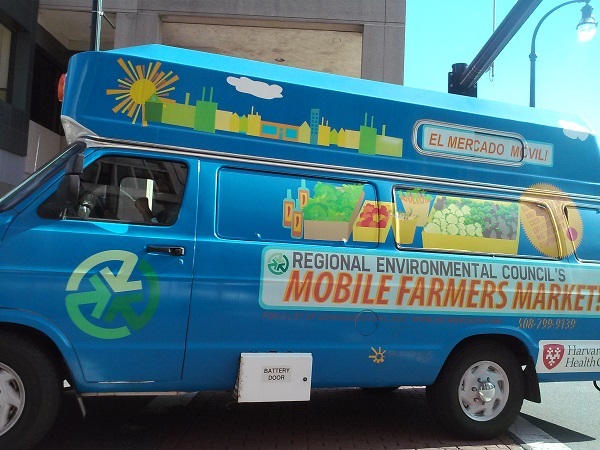
Here in Massachusetts, project teams in the Pioneer Valley, Worcester County, and metropolitan Boston area are devising solutions for a multitude of economic, societal and environmental concerns. Student teams and their advisors are helping to make strides in areas as diverse as water quality, clean energy, access to good nutrition in urban food deserts, economic development, and coastal protection.
In terms of economic impact, WPI contributes a substantial benefit to the city and county’s fiscal health. Last year, WPI provided more than $4 million in grants and scholarships to 704 Worcester residents, and a total of $9 million to Worcester County residents. In addition, some 845 faculty and staff reside in Worcester County, and there are 5,000 alumni living in Massachusetts. Graduate and undergraduate students performed more than 59,000 combined hours of community service in 2015.
Some other notable economic statistics for 2015:
- $61 million combined payroll for faculty and staff living in Worcester County
- $800,000 in real estate taxes paid to the City of Worcester
- $490,000 in water/sewer fees paid to the city
- $321,000 in contributions such as the Skating Oval, Wheels to Water, and other programs
- $109,000 in police coverage/costs to the City of Worcester
- $5 million in capital expenditures paid to contractors and vendors in Worcester County
- $9.9 million in purchasing expenditures to vendors and suppliers in Worcester County
FRESH FOODS IN URBAN FOOD DESERTS
In 2012, Worcester’s Regional Environmental Council started a mobile farmers market to sell locally grown, nutritious food in neighborhoods with poor access to affordable, fresh food. To help the Council diversify the products it carried and increase the profitability of the operation, a WPI project team designed a mobile solar-powered refrigeration system and a new product storage system.
“This has made a direct impact in the sustainability of our market and helped to improve the diets of the 8,000-plus senior and family residents that we serve annually.” – Casey Burns, Food Justice Program Director for the Regional Environmental Council.
Research conducted by the USDA in 2013 identified four food deserts in Worcester, which have an estimated 14,484 people with low access to affordable and nutritious food, with 3,579 of those people considered to be low-income.
When the WPI project began, the mobile market consisted of a converted van, traveling to low-income areas in Worcester to sell healthy food at discount prices. The market sold fruits and vegetables, but not meat or dairy products. Now, the mobile market has enabled the program to be more economically sustainable, while widening the food offerings to residents, says Casey Burns, Food Justice Program Director for the Council.
“Our collaboration with the IQP team resulted in a solar-powered system for a refrigerator and freezer inside our mobile farmers market van,” she says. “We now have the capacity to offer frozen meat, eggs, cheese, and other products on our market, in addition to fruits and veggies.
“This has made a direct impact in the sustainability of our market and helped to improve the diets of the 8,000-plus senior and family residents that we serve annually. We have also since been asked for, and shared this model as a best practice with four other emerging mobile markets and at regional and national food justice conferences.”
Meanwhile, in Springfield, there are three projects in play that have potential social and economic impact. Teams from the Pioneer Valley Project Center worked with DevelopSpringfield, a quasi-public agency, to address lack of a supermarket in the city’s Mason Square neighborhood.
IQP teams in spring 2015 partnered with the Foisie School of Business independent study graduate students and Springfield Technical Community College sophomores to evaluate the feasibility of three operating models for a supermarket. The students analyzed various critical considerations for the market, including environmental sustainability, energy efficiency, safety and security, and local community concerns.
Professor of practice Kevin Sweeney, who advised the teams, says that in food deserts, low-income customers don’t buy enough of the high-end products that produce the margins for traditional supermarkets to remain profitable. The concept here is to make it cheaper to build and operate a food store so those margins are easier to obtain, he said. Efforts are still under way to bring a market or collection of small markets to the Mason Square area to satisfy residents’ nutritional needs, Sweeney says.
“The students’ piece for the alternative plan is critical in getting it to work,” Sweeney says. “There’s not an easy solution as the economics for supermarkets change. We helped solve one piece of an incredibly complicated mosaic.”
DevelopSpringfield has also asked for WPI’s help with a state program to revitalize two neighborhoods, the city’s North and South Ends.
The South End is in the shadow of a proposed casino site, and remains underdeveloped. One IQP team has performed a front-end feasibility study looking at land use, infrastructure, and other issues related to economic development. A private contractor will package data for the city to use, Sweeney says.
The North End is an older established, primarily Latino neighborhood with locally owned businesses, with no room for economic expansion. A WPI team will perform a 3.5-year economic strategies study for the two neighborhoods.
ENVIRONMENTAL POLICY
A project team in 2015 worked in collaboration with the office of state senator James Eldridge (D-Middlesex & Worcester District) for a new underground storage tank (UST) spill cleanup policy in Massachusetts. This policy aims to address abutting homeowners affected by a spill.
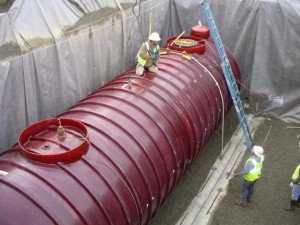
Eldridge became aware of the inadequacies in current Massachusetts underground storage tank law after a 2012 spill in Marlborough, where more than 2,000 gallons of gasoline was released from a gas station. The gasoline spread to the properties of four neighboring residents, causing the owners great financial hardships. As of late 2015, three years after the occurrence, the spill was still being cleaned up, and the third-parties affected had not received compensation for property damages.
The spill site remediation process is often expensive and a financial burden on the responsible party. For this reason, Massachusetts has a fund (21J fund) set aside specifically for UST spills. It is funded by an annual $250 tank ownership fee and gasoline tax of 24 cents per gallon. The responsible party can be reimbursed for the cost of a tank spill from the fund for up to $1.5 million per occurrence, leaving an additional $1 million aside for third party property damages.
The “responsible party” is responsible for the cleanup of affected abutting properties, but not for restoration of property value. Third parties must bring an action in court to receive financial compensation for property damages. If granted financial compensation, the PRP must pay for third party restoration, but then files to the 21J fund for reimbursement. The process for third parties to receive property loss damages is time consuming and expensive
The team recommended more efficient access to the 21J fund to cover third parties, and that a future WPI student group further research the state Department of Environmental Protection’s involvement in specific cases where natural resources or drinking water are affected. These recommendations are aimed at helping Sen. Eldridge’s office propose a comprehensive UST cleanup policy that will aid families. A comprehensive policy will not only benefit families currently enduring the remediation process of their properties, but future families who will be unfairly impacted by UST spills.
“WPI students Brian, Julia, and Kelsey were an incredible asset to my office, and the victims of a 2012 gasoline spill in my district, with their community engagement project last semester,” says Eldridge. “Thanks to their hard work, impressive research, and thoughtful recommendations, I will be filing legislation in 2016 to provide a more comprehensive response to understand storage tank leaks not just in my district, but across the Commonwealth of Massachusetts.
“I applaud WPI for including a community service project in their core curriculum and I would like to thank professors Corey Dehner and Melissa Belz for guiding Brian, Julia, and Kelsey through their work.”
FLOOD RISK ADAPTATION
With more than 35,000 residents in only 2.2 square miles, Chelsea is a small but densely populated city surrounded by water on three sides. Over the last 15 years, flooding caused by sea level rise and storm surge has cost the city and its residents approximately $16.8 million in property damage. Recently released models for 2030 and 2070 floods indicate inundation depths up to 10 feet, highlighting severely vulnerable areas of the city.
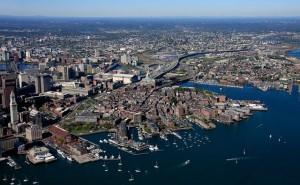
Last year, a team from the Boston Project Center, with support of the Massachusetts Institute of Technology Sea Grant College Program, identified structural and geographical characteristics of five public buildings that cause them to be structures at risk for coastal flooding. The students further identified sensitivity of critical buildings by looking at their services and uses, during both day-to-day and flood events.
The IQP identified possible flood adaptation measures that could be used in conjunction with critical public buildings, and created a prioritized list of flood adaptation strategies with a level of urgency, in addition to cost and time estimates for proposed options.
John DePriest, director of planning and development for the city, said this was the second project WPI had conducted for Chelsea officials. Each time, officials have been impressed not only by the students’ professionalism and work ethic, but also with the quality of the product that they were able to provide, he says.
“The City of Chelsea is very pleased to have had the opportunity to work with the WPI students,” DePriest says. “WPI’s interdisciplinary approach, convening students with a diverse range of majors allowed for a very creative and thoughtful approach to a topic with wide ranging implications. We have also been impressed by the professors and associated resource people who directed the students during the project.
“The most recent project involved modeling flood levels under select climate change scenarios and measuring the impact on several city-owned facilities, including the City Yard and schools. The adaptation alternatives that the team reviewed and provided are being used as the basis for an engineering study that will develop the adaptation measures identified by the WPI team to the concept and cost estimation level so that we can begin programming them into our capital improvement plan and funding requests for implementation.
“The engineering study, which is being conducted by a WPI alumnus, is funded through a state coastal remediation grant, and the city was informed by the grantee that the participation of WPI students in the initial part of the study was instrumental in tipping the scales toward awarding the grant to the city. We look forward to continuing this relationship with WPI.”
CLEAN ENERGY
In 2005, administrators at Holy Name Junior Senior High School in Worcester were searching for a way to lower energy costs for the private school, which had incurred expenses of $127,000 on energy, most of which was used to heat the building via a baseboard electric heating system. If a cheaper alternative energy source could not be found, the school would be forced to cut extracurricular and academic programs in order to cover heating costs.
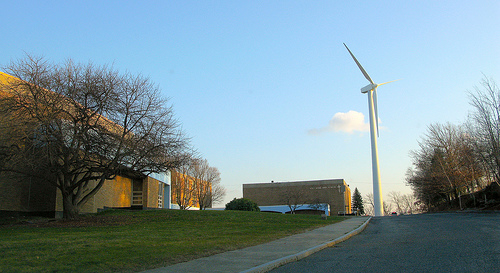
An IQP team performed a feasibility study, examining wind potential, installation costs, electricity usage, grants, loans, and projected electricity generated by the turbine, as well as ecological and social impacts. Based on the team’s mathematical model, a 600 kW wind turbine was the best fit for Holy Name, producing 60 to 70 percent of the school’s electricity during the peak demand periods in the winter months.
In October 2008, Holy Name completed construction of its wind turbine, the first in Worcester. The turbine, visible from the southern end of the city and Route 146, measures 262 feet to the tip of its tallest blade.
Headmaster Ed Reynolds has said that the turbine provides 95 percent of the energy the school uses, and when the final payments are made on the nearly $2 million project, the school will realize up to $200,000 annually in energy-cost savings.
“The feasibility study done by the WPI students for the wind turbine at Holy Name made the turbine construction project possible,” Reynolds says. “Without their exemplary work, we would not have this clean, renewable energy source on our campus.
“This turbine provides our school’s electric utility, serves as a research tool for Holy Name and WPI students, and provides an outstanding model for progressive thought, creative problem solving, and stewardship of the environment.”
Similarly, in 2009 a project team determined the feasibility for various alternative energy sources for the Town of Leicester, recommending the purchase and installation of three solar electric systems: a 100 kW system to be located on the high school roof, a 50 kW system on the middle school roof, and a 50 kW system on the Memorial School roof. It was projected that this would cost the town $508,750 after rebates, which would be paid back in about nine years. The net savings of the system was estimated at almost $2.8 million over 30 years, assuming a 6 percent annual increase in electricity cost.
In the fall of 2012, Broadway Renewable Strategies completed four photovoltaic installations for the Town of Leicester, at Leicester High School, Primary School, Memorial School, and the Police Station.
The WPI students estimated it would cost about $500,000 to outfit schools and a police station with solar energy; the payback would be in about eight years, and after that electricity would be produced at no cost to the town, with annual savings projected at $50,000.
NANTUCKET
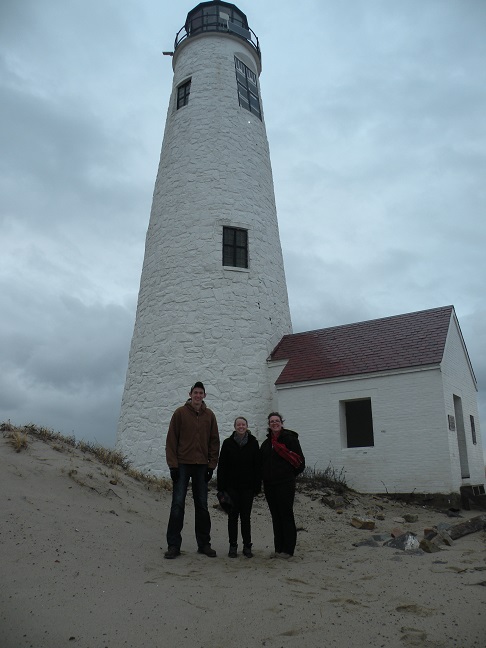
As the summer demand for electricity on Nantucket approaches the supply capabilities of the two undersea cables that power the island, residents of Nantucket face the possibility of having to finance a third cable. A project team from the Nantucket Project Center last year assisted the Town of Nantucket Energy Office in identifying ways to increase public awareness on cost saving and energy reduction initiatives. Through surveys and interviews they evaluated residents’ knowledge and receptiveness towards energy and energy saving programs. The team recommended that the Town Energy Office work with local stakeholders to distribute information and hold events that promote energy saving initiatives and drafted informational materials that the Town Energy Office may use in the future.
Since 2008, 129 students at the Nantucket Project Center have conducted 40 projects in collaboration with various local organizations and town committees and departments. These projects have covered a wide variety of topics in areas such as alternative energy, energy conservation, museum studies, coastal erosion, pedestrian access for the disabled, and affordable housing.
WATER QUALITY
Nearly 500,000 tons of road salt is used each year on Massachusetts roadways. Runoff from these roads deposits salt in public groundwater sources, which poses human, environmental, and structural health risks. A WPI team last year established a framework for prioritizing opportunities to protect drinking water from salt contamination.
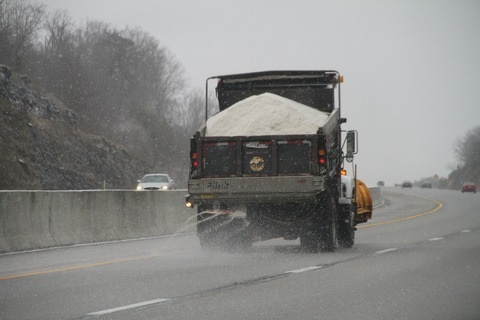
The project included the development of Geographic Information System (GIS) maps of sodium concentrations in community groundwater sources throughout Massachusetts. It included a prioritization framework to highlight the factors indicating potential risk of road salt contamination in groundwater sources, and also provided a statewide fact sheet about road salt and its impacts to drinking water sources and information on the prioritization framework.
The framework is a tool intended to be used by municipal water suppliers to alert them of potential risks to their groundwater sources so they can take actions to better protect these sources from road salt contamination.
The completion of the project resulted in three proposed deliverables: GIS maps of sodium concentrations throughout Massachusetts, a prioritization framework that highlights the risk-causing factors of salt contamination, and an informative fact sheet for water suppliers and the public. The team found that relatively little action has been taken to protect groundwater supplies from salt contamination in the commonwealth, and suggested that the three major deliverables of the project be used by water suppliers to take the first steps in addressing the threats posed by road salt.
NEW ENGLAND AQUARIUM

The Boston Project Center has collaborated with the New England Aquarium on a series of projects involving the endangered North Atlantic right whale. There are approximately 500 North Atlantic right whales alive today, and human actions continue to threaten their population. One of the paramount dangers facing these sea mammals is entanglements in fishing gear. In 2013, a project team determined the characteristics of a rope for use in the vertical lines of lobster traps that would be safe for the whales and effective for lobster fishing. The team conducted interviews with whale researchers and lobstermen in Maine, subsequently creating a tool to assess potential alternatives to current lobster fishing ropes. They then assessed seven alternatives to current ropes to display the tool’s effectiveness.
More recently, a WPI team created a digital interactive experience about the North Atlantic right whale in order to evoke an empathetic response within players, provide knowledge about human actions hindering the species’ recovery, and engage players through entertaining gameplay. Over a nine-week period, the team developed The Urban Whale, a prototype that aims to meet these requirements. In addition, the project team determined how The Urban Whale could be further developed into an aquarium exhibit or web-based game that would fulfill its original purpose, as well as how this project could serve as a template for a new genre of video game that evokes empathy for endangered species, provides educational content, and is fun to play.
A third project identified and analyzed emerging technologies that could be used at the New England Aquarium to educate the public on the dangers facing the North Atlantic right whale. The project team researched how five emerging technologies could be implemented at the aquarium through an analysis of nine example exhibit ideas. These exhibit ideas were evaluated on their ability to attract, hold the attention of, and communicate a message to visitors. The students concluded that virtual reality, augmented reality, mixed reality, touch screens, and projection mapping are viable mediums for educating visitors in an aquarium setting in place of live animals.

